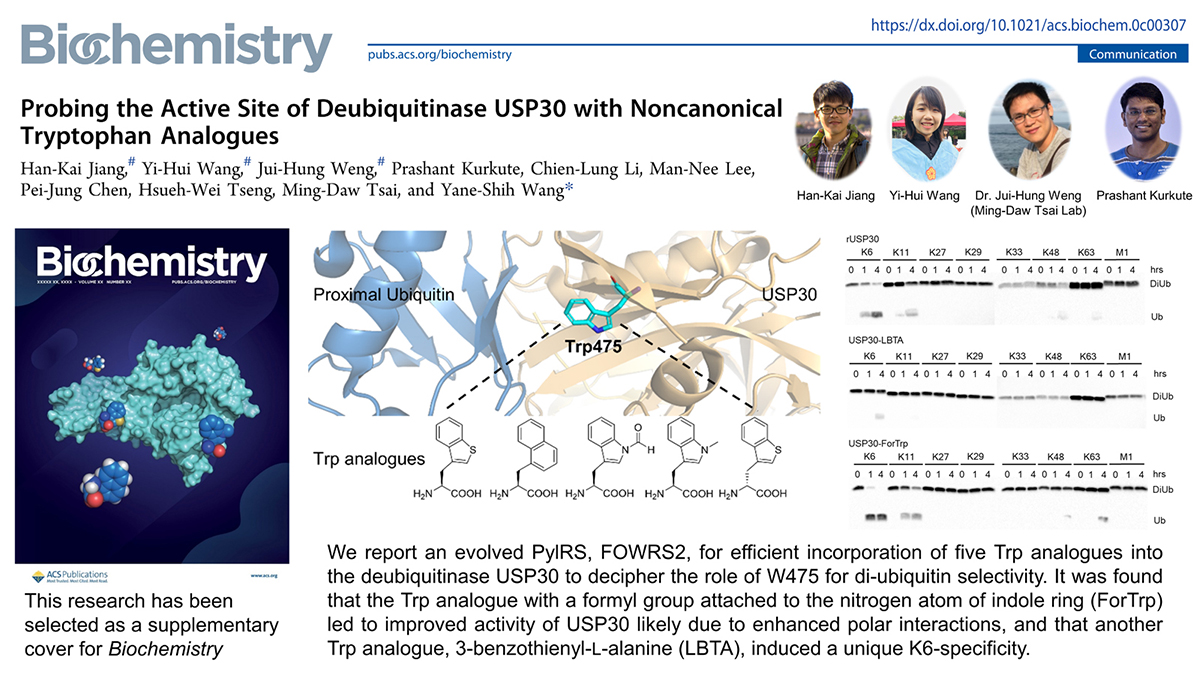
 中央研究院 生物化學研究所
中央研究院 生物化學研究所
Methanosarcina mazei pyrrolysyl-tRNA synthetase (PylRS) and its cognate tRNA have been evolved to generate genetically encoded noncanonical amino acids (ncAAs). Use of tryptophan (Trp) analogues with pyrrole ring modification for their spatial and polarity tuning in enzyme activity and substrate specificity is still limited. Herein, we report the application of an evolved PylRS, FOWRS2, for efficient incorporation of five Trp analogues into the deubiquitinase USP30 to decipher the role of W475 for diubiquitin selectivity. Structures of the five FOWRS-C/Trp analogue complexes at 1.7-2.5 Å resolution showed multiple ncAA binding modes. The W475 near the USP30 active site was replaced with Trp analogues, and the effect on the activity as well as the selectivity toward diubiquitin linkage types was examined. It was found that the Trp analogue with a formyl group attached to the nitrogen atom of the indole ring led to an improved activity of USP30 likely due to enhanced polar interactions and that another Trp analogue, 3-benzothienyl-l-alanine, induced a unique K6-specificity. Collectively, genetically encoded noncanonical Trp analogues by evolved PylRS·tRNACUAPyl pair unravel the spatial role of USP30-W475 in its diubiquitin selectivity.
